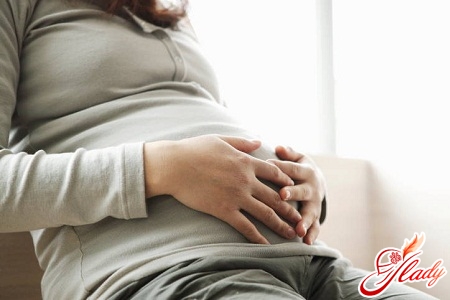 Each birth is individual and unique in its own way:short and even rapid, drawn-out and painfully long, requiring surgical intervention or special instruments for obstetrics. It is impossible to predict the course of labor with sufficient accuracy, but it is necessary to be somewhat prepared for possible options. The delivery options themselves do not pose a particular danger to the mother and baby, but they create additional problems. Sometimes complications arise when it is not possible to solve the problems that arise through the efforts of the woman in labor, in other cases, complications arise unexpectedly and require immediate medical attention. Most complications can be detected by monitoring the condition of the woman in labor and the baby. Constant monitoring (tracking) of the condition of the woman in labor and the fetus allows the doctor to make the right decision. If any complications arise (rarely, but it happens), you should, first of all, not panic, rely on the experience of doctors and try to follow the doctor's instructions exactly. Deviations from the norm include:
Each birth is individual and unique in its own way:short and even rapid, drawn-out and painfully long, requiring surgical intervention or special instruments for obstetrics. It is impossible to predict the course of labor with sufficient accuracy, but it is necessary to be somewhat prepared for possible options. The delivery options themselves do not pose a particular danger to the mother and baby, but they create additional problems. Sometimes complications arise when it is not possible to solve the problems that arise through the efforts of the woman in labor, in other cases, complications arise unexpectedly and require immediate medical attention. Most complications can be detected by monitoring the condition of the woman in labor and the baby. Constant monitoring (tracking) of the condition of the woman in labor and the fetus allows the doctor to make the right decision. If any complications arise (rarely, but it happens), you should, first of all, not panic, rely on the experience of doctors and try to follow the doctor's instructions exactly. Deviations from the norm include:
- weakness of labor - prolonged labor;
- problems with presentation of the fetus;
- prolapse of umbilical cord.
Let's take a closer look at these issues.
Prolonged delivery
Weakness of labor may slow downтечение родов до суток и более, такие роды считают затянувшимися. Различают первичную и вторичную слабость родовых сил. При первичной слабости схватки вялые и непродолжительные с самого начала родовой деятельности, вторичные — могут развиваться, когда роженица устанет. Нормальные схватки ослабевают, продолжительность между ними увеличивается. Слабость родовых сил может возникнуть по многим причинам: гормональные нарушения, нарушение деятельности центральной нервной системы, последствия ранее перенесенных воспалительных заболеваний, большие размеры плода и др. В этом случае показана стимуляция родовой деятельности. Вы можете помочь себе, стараясь сохранить спокойствие и не впадать в отчаяние. Считайте медленное течение родов временным явлением, отвлекайтесь, отдыхайте, выполняйте самостоятельно приемы стимулирования. Если роды развиваются медленно в самом начале, это не значит, что и все роды окажутся затянувшимися. В активной фазе (после раскрытия шейки матки) процесс родов в большинстве случаев идет нормально. Не спешите в роддом, проконсультируйтесь с врачом и попытайтесь использовать этот период для отдыха: поешьте и попейте, сделайте массаж спины, полежите в ванне. Теплая ванна снимет напряжение, замедлит непродуктивные схватки. Если ваши схватки становятся утомительными или продолжаются более суток, несмотря на ваши усилия, вы можете прибегнуть к медицинскому вмешательству. В этом случае возможны два варианта: попытаться остановить схватки и дать вам отдохнуть с помощью медикаментов (транквилизаторов, расслабляющих матку, или седативных препаратов) или стимулировать более эффективные схватки с помощью таких процедур, как отделение плодной оболочки, вскрытие плодного пузыря, инъекции окситоцина и др. При замедлении родовой деятельности после начала активных схваток могут возникнуть проблемы, связанные с неэффективностью сокращений матки, неблагоприятным предлежанием или расположением плода, узким тазом. Неподвижность, постельный режим, полный мочевой пузырь, препараты, замедляющие или останавливающие схватки, страх, беспокойство и стресс также могут стать причиной замедления родовой деятельности. В этом случае необходимо: каждый час опорожнять мочевой пузырь, так как он может замедлить ощущение плода; прекратить прием лекарств, замедляющих родовую деятельность, постараться вывести их из организма обильным питьем; изменить ваше положение — походить, сесть, стать на четвереньки. Врач даст оценку снижения прогресса в родовой деятельности и самочувствия ребенка. Обращайтесь за помощью к медперсоналу: более частый осмотр влагалища, проверка раскрытия шейки матки, опущения или разворот ребенка должны быть под более четким контролем. Они должны чаще прослушивать пульс ребенка, возможно, с использованием электронного мониторинга плода. Капельница для предотвращения обезвоживания, обезболивающие и медикаменты для расслабления более уместны, если ваши роды чрезмерно затянулись. Врач или акушерка могут искусственно вскрыть плодный пузырь, чтобы ускорить роды или ввести окситоцин для увеличения интенсивности и частоты схваток. Если ребенок находится в стрессе, на что указывает изменение его пульса при схватках, или роды продолжают развиваться медленно, несмотря на принятые меры, возможно, придется прибегнуть к кесареву сечению.
Face (posterior-occipital) presentation
One of the most common reasons for protractedcontractions are in occipito-posterior presentation, when the back of the baby's head is directed towards the back. In this case, the baby must first turn into an occipito-anterior presentation, and dilation and descent may be delayed. Most babies turn into an occipito-anterior presentation by the time the uterus is fully dilated, but some babies will be born in this position with their face turned towards the mother's stomach. With an occipito-posterior presentation, significant lower back pain is possible during contractions and even between them, since the hard round part of the baby's head (the back of the head) presses on the sacrum, stretching the sacroiliac joints and causing pain in the entire lumbar region. You can help your baby turn and relieve pain by following our advice:
- Change position every 20-30 minutes to take advantage of gravity and motion.
- Do not lie on your back. This will only intensify the pain, because in such a pose the child presses his head even harder on your spine. In addition, your tailbone, which must straighten out, will remain motionless.
- Most of the time during labor is spent onon all fours or in the knee-elbow position. This will help not only to remove pressure from the back, but also help the child to turn over using the force of gravity, since the heaviest part of the child's body (the back of the head and the torso) will be attracted to the floor.
- Do rotational movements with your pelvis. Standing on all fours or in a knee-elbow position, rotate the pelvis to make the child turn over.
- Continually move! When walking, the pelvic bones will move freer. This will help the child spin and turn around in search of the easiest way through the pelvic region. Think twice before asking you to do epidural anesthesia. If you lie horizontally, the child may not turn over, which can lead to the application of forceps or a caesarean section.
- Apply a cold or hot compress totime of fights or between them on the abdomen, lower back or crotch. Compresses help to relieve muscle tension. Most women prefer hot compresses, but some benefit from cold ones, such as a towel soaked in iced water or an ice sheet.
- Stand up or sit under the shower and direct the stream of water to the painful area.
- Ask your partner or nurse to squeeze yourthighs during fights. To do this, put your hands on your buttocks and squeeze your hips on both sides. You can show the exact place and say how and how much to push.
- If there is a hydromassage bath, take it by filling it with water above the stomach level. The deeper you dive into the water, the easier it will be for your child to turn.
- It is possible to use electrostimulation. In the method of anesthesia, four stimulating pads are superimposed on the back, on which pulses from the hand generator are generated, creating a slight itching or tingling in the lower back. A woman can adjust the level of electrostimulation by herself. Experts believe that, like acupressure, electrostimulation interferes with the passage of pain signals to the brain and promotes local secretion of endorphin, so that it is possible to lower the threshold of sensitivity to pain.
- Use the technique of breathing and relaxation.
One of the reasons for delayed laborAfter the cervix has opened, there may be a short cord that restricts the baby and causes the baby's heart rate to slow during contractions. Very rarely, there is a delay in the emergence of the baby's shoulders after the head has been born. This serious complication occurs when the shoulders are so wide or so rotated that they do not pass through the pelvis. It is not possible to perform a cesarean section after the head has been born. In this case, it may be possible to use obstetric forceps or a vacuum extractor to perform a maneuver that allows the baby to be turned and the shoulders to be released. It is important to do everything quickly, since the baby's oxygen supply through the umbilical cord may be reduced.
Cord loss
Umbilical cord prolapse is rare but extremelyserious complication. If the umbilical cord slips through the cervix into the vagina before the baby is born, it can become trapped between the baby and the wall of the partially dilated cervix or the bones of the mother's pelvis. During contractions, this compression of the cord can catastrophically reduce the fetus's oxygen supply, putting the baby's life at risk. Cord prolapse is most likely (though still rare) when the amniotic sac suddenly ruptures and the baby is in a breech or transverse position, or when the baby's head is "wandering" and has not yet descended into the pelvis. In the case of a dangerous fetal presentation, if the water has broken in a stream, you should kneel down and lower your chest to the floor until the doctor arrives; in this position, gravity will move the baby and, possibly, the cord that has fallen out of the cervix. It is also advisable to remain in this position in the car on the way to the hospital, where the mother will receive qualified medical care.









